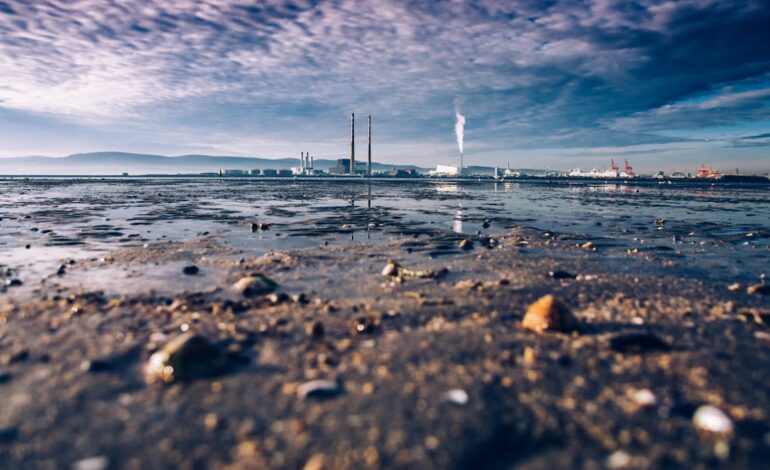
How Harmful Chemicals Can End up in Your Drinking Water
There’s nothing sadder than realizing that our drinking water is often found to be contaminated with harmful chemicals. Unfortunately, it’s a reality that millions of Americans, as well as people around the world, have to deal with daily.
According to CNN, in Bangladesh, tens of millions of people rely on arsenic-contaminated water for drinking. The situation may deteriorate further as new evidence indicates that climate crises, such as flooding, are altering underground water chemistry. Consequently, arsenic levels are being pushed even higher.
The US isn’t faring any better in this regard. The Environmental Working Group (EWG) approximates that over 200 million Americans are consuming water tainted with PFAS. These chemicals are harmful even at minimal concentrations and have been associated with severe health issues, such as heightened cancer risk.
Now, one question must be answered – how do such toxic and harmful chemicals end up in our drinking water in the first place? Let’s find out.
Industrial Discharges
Industrial activities such as manufacturing, mining, and chemical production are major sources of water contamination. These industries often release pollutants directly into nearby water bodies, either accidentally or as part of their regular operations.
Chemicals such as heavy metals, solvents, and pesticides can leach into groundwater or surface water, contaminating drinking water sources. Once in the water supply, these chemicals can pose serious health risks, including cancer.
In fact, such discharges were the main cause that led to the Camp Lejeune water contamination incident and cancer cases. TorHoerman Law reports that the Camp Lejeune region faced a significant crisis of water contamination. This resulted from the discharge of hazardous chemicals into the community’s water source.
Following the Camp Lejeune toxic water contamination incident, numerous residents experienced debilitating health issues, including cancer. Consequently, victims initiated the Camp Lejeune lawsuit seeking justice for the harm caused.
Agricultural Runoff
Agricultural activities, especially the application of fertilizers and pesticides, play a major role in water pollution. Understanding ag systems management can help address and mitigate the environmental impacts of these practices, ensuring better strategies for sustainable farming.
As farmers use these chemicals on their fields, rainfall and irrigation wash them into adjacent rivers, lakes, and groundwater reservoirs. The nitrogen and phosphorus present in fertilizers can fuel the growth of algal blooms, deteriorating water quality and releasing toxins harmful to human health.
Similarly, pesticides like herbicides and insecticides can seep into drinking water sources, contributing to health issues such as hormone disruption and developmental disorders.
Municipal Wastewater
Wastewater treatment plants are designed to remove contaminants from sewage before it is discharged back into the environment. However, these facilities may not always effectively remove all chemical pollutants, especially in cases of outdated infrastructure or insufficient treatment processes.
Pharmaceutical residues and household chemicals are often present in municipal wastewater and can end up in drinking water sources if not adequately treated. Long-term exposure to these contaminants has been associated with adverse health effects, including antibiotic resistance and endocrine disruption.
Underground Storage Tanks
Underground storage tanks (USTs) are commonly used to store fuel and other hazardous substances at gas stations, industrial sites, and even residential properties. Over time, USTs can corrode or develop leaks, allowing harmful chemicals to seep into the surrounding soil and groundwater.
Once contaminants reach groundwater, they can migrate and contaminate drinking water wells, posing serious health risks to nearby communities. Substances like benzene, toluene, and xylene, which are found in gasoline, can cause cancer and other health problems when consumed in drinking water.
Landfill Waste
According to the Environmental Science and Pollution Research journal, landfills contain vast amounts of waste, including household garbage, industrial byproducts, and hazardous materials. As rainwater percolates through landfills, it picks up a cocktail of chemicals and contaminants, forming a toxic liquid called leachate.
If not properly managed, landfill leachate can migrate into groundwater and surface water, contaminating drinking water sources downstream. Heavy metals and other hazardous substances present in leachate can pose significant health risks to those exposed, including liver damage, kidney problems, and cancer.
Aging Infrastructure
In many cities and towns, water distribution systems are aging and in need of repair or replacement. As pipes corrode and deteriorate over time, they can release contaminants such as lead, copper, and asbestos into the water supply.
Lead, in particular, is a potent neurotoxin that can cause developmental delays, learning disabilities, and behavioral problems, especially in children. Additionally, aging infrastructure may be more susceptible to breaches and contamination events, further compromising the safety of drinking water.
Frequently Asked Questions (FAQs)
What are the consequences of chemicals in drinking water?
The presence of harmful chemicals in drinking water can have far-reaching consequences for public health. Chronic exposure to these contaminants has been linked to a myriad of health problems, including cancer, neurological disorders, reproductive issues, and immune system dysfunction.
How can we address the issue of chemical contamination in drinking water?
To address the issue of chemical contamination in drinking water, concerted efforts are needed at both the individual and societal levels. Improved regulation and enforcement of environmental laws can help prevent industrial and agricultural pollution. Additionally, regular testing and monitoring of drinking water supplies are essential to identify and mitigate contamination risks.
Which chemicals make water polluted?
Heavy metals like lead, solvents from industrial activities, pesticide residues, and oil discharged from ships are the major chemicals responsible for water pollution. These pollutants pose a threat to aquatic ecosystems, endangering life forms and contributing to infertility and mortality.
In conclusion, the pathways through which chemicals enter our drinking water are numerous and diverse, posing significant challenges to public health and environmental sustainability. By understanding these pathways, we can work towards implementing effective strategies to ensure clean, safe drinking water.





